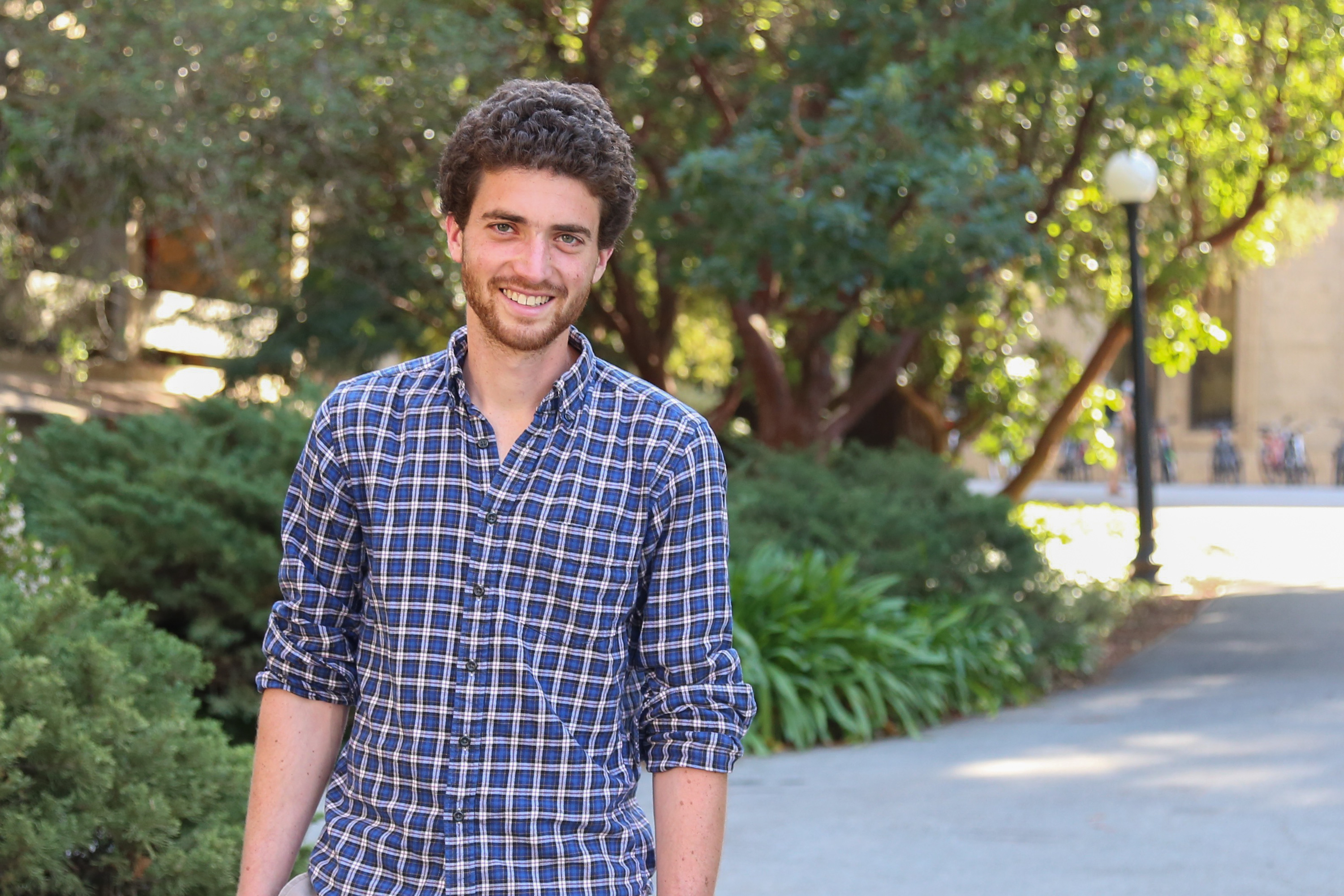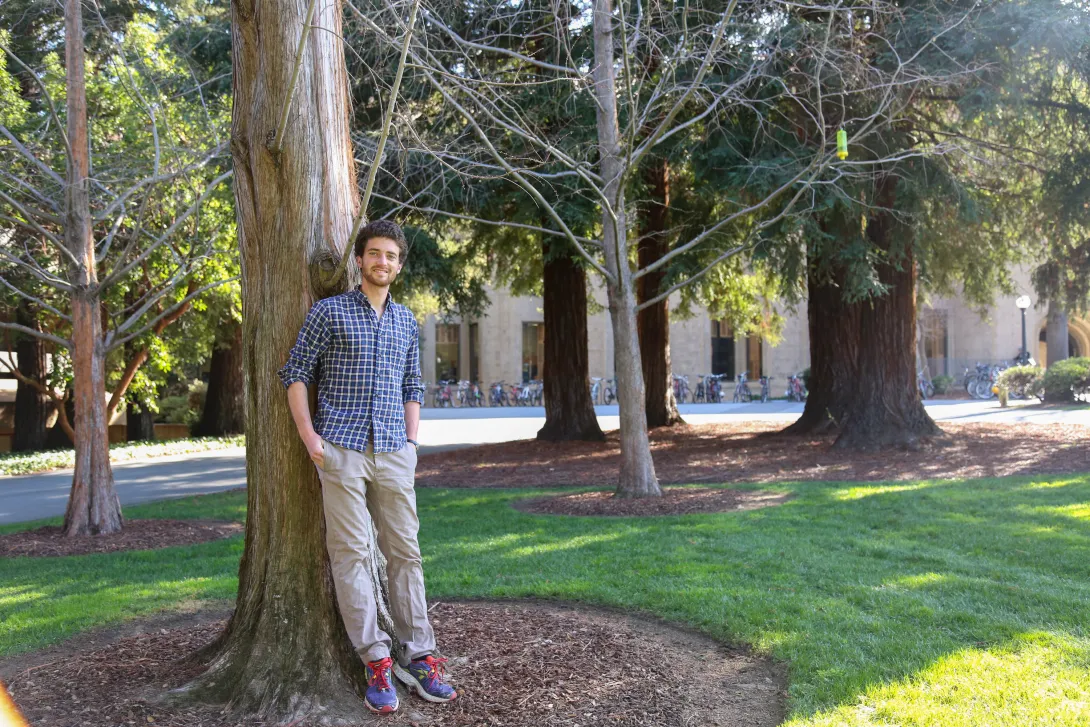
Jonas Crimm
You’re more than halfway through STEP-Secondary. How would you describe the experience?
STEP has been full of learning experiences in settings both expected and unanticipated. Many pieces of this year have been unanticipated: joining the San Francisco Teaching Residency (despite not being in the math/science subject areas usually recruited), having the opportunity to teach at an extremely diverse school in the city [San Francisco], and taking a diversity of classes from the theoretical to the practical. Taking a full course load and planning classes for two curricula at my placement has made the year extremely full. While this fullness occasionally overwhelms, it is more often a positive aspect of the program: I frequently feel like I am learning at an intensely rapid pace, catching ideas and thoughts and practices and theories from everyone around me at all times and from all directions. It has certainly been quite a ride so far.
How has your teaching changed since STEP began in June?
Having had three years of teaching experience (and five years in schools) prior to entering STEP, my aims in the program were less to start out as a teacher than to gain new frameworks and understandings of teaching and learning that would allow me to become more purposeful and reflective as an educator. I feel that this goal is largely being met: I have become much more purposeful and methodical in how I approach teaching, from planning to instruction to reflection.
So far the most transformative component of the STEP program has been learning about assessment practices, which are beginning to make my teaching more reflective, structured and coherent. Additionally working at my placement in San Francisco has been a fantastic reintroduction to the challenges of history teaching.
How would you describe the other STEP students?
When I first arrived at STEP, I was shocked to see that nearly everyone was from California — and wondered if I'd be the odd one out. But it turns out that California can turn up some pretty remarkably diverse people (and we got a pretty good group from the rest of the US as well). Although on average relatively young (I can feel old at times — a strange feeling for someone not yet 30!), STEP students are deeply inquisitive, thoughtfully reflective, and committed in their own way to the goal of teaching for equity. I've made good friends across the different subject areas, which has allowed for some great cross-pollination of teaching ideas!
Additionally, I'm a member of the San Francisco Teacher Residency cohort, a group of 30-odd University of San Francisco and STEP students placed in schools in the city. The SFTR experience has been fantastic for its more explicit focus on issues of social justice and meeting the educational needs of specific communities in the Bay Area.
What led you to choose Stanford as the place to learn to be a teacher? What’s special about the teaching program?
Several factors contributed to my choosing Stanford: proximity (I'd lived in SF for two years), financial aid and the fact that my boyfriend of two years is here as a PhD student in materials science and engineering!
During the admit day visit, I'll admit that I was concerned about the idea of the "STEP teacher" — that the program would force us as teachers to conform to certain orthodoxies of theory and practice. However, I've found that with my experience and identity as a teacher, I've been able to contextualize the ideas about which I'm learning at STEP and make informed decisions about what to choose or not.
What is special about STEP?
Our new director (Peter) has given the program a fantastic energy. The STEP instructional staff (Meghann Tovar, Kristina Dance, Colin Haysman et al) is superb and has taught me much about teaching and learning. The placements are diverse, resulting in a wide array of student-teaching experiences across the cohort. And it's Stanford, which means resources are nearly unlimited.

What were you doing prior to applying to the GSE?
After graduating college in 2010, I spent three years teaching immersive high school English in a small town on the Tibetan Plateau in northwestern China. In a public boarding high school, I worked intensively with minority Tibetan and Mongolian students from rural farming and nomadic herding backgrounds. This work included curriculum planning and instruction, but also a wide range of other initiatives: planning extracurricular clubs and activities, creating culturally-relevant materials and textbooks, operating summer camps and schools, structuring cultural documentation programs, organizing teaching internships, coordinating service learning projects in students' home communities.
Alongside my colleagues, I'm proud to have built a strong community there: These students are hands-down some of the most amazingly impressive people I've ever worked with, and I stay in touch with them regularly today. They are now in college and creating amazing, socially impactful programs of their own in their hometowns. Returning to the United States in 2013, I began working at the Chinese American International School, a private bilingual dual-immersion K-8 school in San Francisco.How did you decide that you wanted to be a teacher?
I took my first “teaching” job at age 16 as a rock-climbing instructor at the local climbing gym (Go Vertical!) in Philadelphia. While I subsequently worked in outdoor education and guiding, I never realized that I enjoyed teaching as such until I began teaching on the Tibetan Plateau. While my first year teaching was exceedingly challenging (the other teachers told kids not to listen in my class and instead do homework for other subjects), I found that I loved working with the students (and that the challenge was a part of the enjoyment). I continued teaching and now I'm here.
What are your expectations for finding work for next September?
As a member of the San Francisco Teacher Residency, I've committed to teaching in the San Francisco Unified School District for several years following graduation. I am hoping to teach history in a "hard-to-staff" high school in the district.Where do you hope to be in five years?
Teaching! With my amazingly supportive boyfriend Michael! Otherwise, I'm not exactly sure on specifics (location, etc.).
Any tips for incoming students to help them get the most from their time in STEP?
Prioritize! Figure out what needs doing and when. ALWAYS make time for yourself: Find things that help you maintain an even keel, and do them when you need to! For me, this means running daily, playing piano, and spending tons of time outside. Figure out what helps you relax and do it.
Also, get involved at your school placement! Get to know the kids as best you can, for this is the true root of teaching: the relationships and communities that you build with students and the amazing learning, growth and empowerment that can result.
This interview was conducted via email in February 2016.

